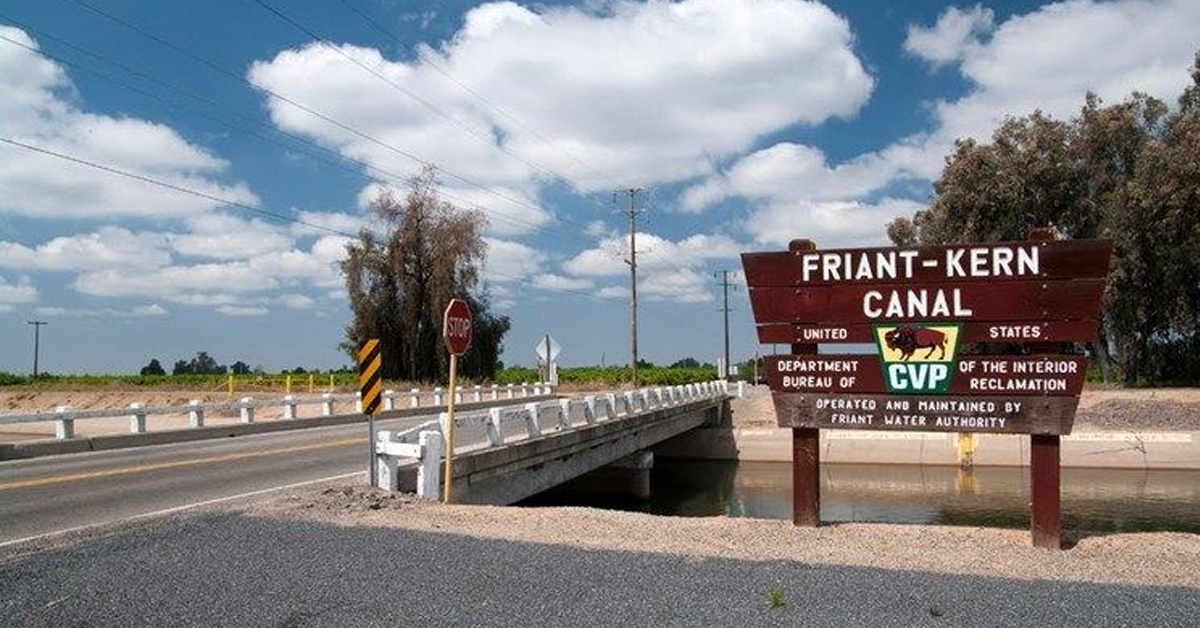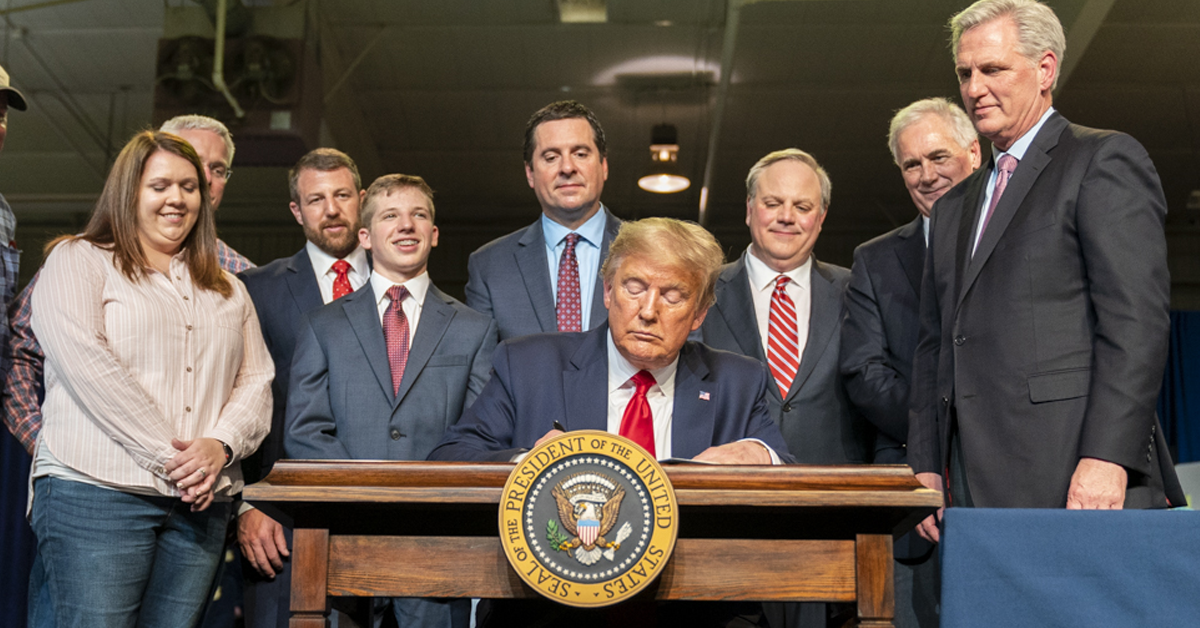Over the last four years, the Trump Administration has improved the ability of California families and farmers to enjoy safe, reliable and bountiful water supplies.
Beginning in 2018, President Trump directed his Administration to maximize water deliveries throughout California and the western United States, instructing federal agencies to replace outdated environmental restrictions that caused water to needlessly be wasted to the ocean.
The Department of the Interior has carried out the President’s sound water supply directive under the leadership of Secretary David Bernhardt.
Last October, the Department’s U.S. Fish and Wildlife Service and Bureau of Reclamation, alongside the National Marine Fisheries Service (NMFS), announced the completion of new endangered species plans for coordinated operations of the federal Central Valley Project (CVP) and the State Water Project (SWP).
The new CVP/SWP plans provide critical flexibility for infrastructure that delivers water supplies to more than 35 million people, enabling project operators to deliver water more reliability to California farms, cities and wildlife refuges. The new CVP/SWP plans were also developed by a team of career professionals using the best available science for the protection of imperiled fish species and were scrupulously evaluated through two robust and independent peer reviews.
President Trump responded to the new CVP/SWP plans in February by describing them as “a good first step,” while also reaffirming his steadfast commitment to water supply reliability.
Always seeking to improve the livelihoods of the American people, the President emphasized in a new memorandum that “more can be done” to maximize water supplies in California, and that the Department and NMFS must “build upon” the new CVP/SWP plans and make “deliveries of water more reliable and more bountiful.”
Effective operations of the CVP and SWP require a coordinated and collaborative approach by federal and state partners. Unfortunately, the Newsom Administration has to date been unwilling to work collaboratively with the Department to improve California water reliability.
While Governor Newsom pledged earlier this year to work with the Trump Administration “to find a shared path forward” for California water, his actions tell a far different story.
In fact, just days after pledging his supposed desire for a “shared path forward,” Governor Newsom and Attorney General Xavier Becerra filed a lawsuit against the Trump Administration seeking to overturn the new CVP/SWP plans.
Underscoring their empty promise of collaboration, the Governor and Attorney General obtained a court order in May that prevented vital water from being delivered to California farmers and communities under the new endangered species plans. Fortunately, last month the court denied a similar request from radical environmental groups aligned with the Newsom Administration, noting there was “simply an absence of proof” that curtailed water operations would benefit endangered species.
Of course, it is the prerogative of Governor Newsom and Attorney General Becerra to represent that the people of California oppose water supply flexibility, best available science, and smart approaches to species protection, but by seeking to overturn the new CVP/SWP plans and the flexibility they provide, Governor Newsom has demonstrated that he would rather jeopardize the state’s water supplies than work closely with the Department on long-term solutions for California water.
It is also curious that his own Department of Water Resources actively supported the development of the new CVP/SWP plans, leading to questions as to whether the Governor’s decision to litigate was based not on merit, but instead on appeasement of extremists who oppose increased water deliveries for Californians.
The Newsom Administration doubled down on fostering water supply uncertainty earlier this spring. On March 31, the California Department of Fish and Wildlife (CDFW) issued a separate, additional endangered species plan for the SWP. Unlike the Trump Administration’s transparent approach, CDFW developed its endangered species compliance behind closed doors and without any input from independent peer reviewers, creating unnecessary restrictions for SWP project operators attempting to deliver water to California farms and communities.
Notably, the express goal of the Newsom Administration in issuing the additional endangered species plan was to “not seek to increase SWP exports,” in stark contrast to the Trump Administration’s water supply maximization policy.
While the exact ramifications of the divergent federal and state approaches to California water are unknown, elected officials and local water districts are clearly concerned with the impacts of Governor Newsom’s recent decisions.
Members of California’s congressional delegation, led by Minority Leader Kevin McCarthy, have called on Governor Newsom to drop the litigation against the new CVP/SWP plans and to abandon CDFW’s confounding SWP endangered species plan.
A state lawmaker, Vince Fong, has also noted the troubling fact that in the face of massive budget cuts put forward by Governor Newsom, his administration has sought $1 million dollars in increased funding to finance its litigation against the CVP/SWP plans.
Elected officials aren’t alone. A broad coalition of federal and state water districts have challenged the Newsom Administration’s SWP endangered species plan in court as well.
Californians should rest assured that the Trump Administration will continue to firmly support improved water supply reliability for farmers, families and the environment.
But until Governor Newsom meaningfully commits to coordination and collaboration with President Trump and Secretary Bernhardt, the state’s water outlook will remain precarious.










